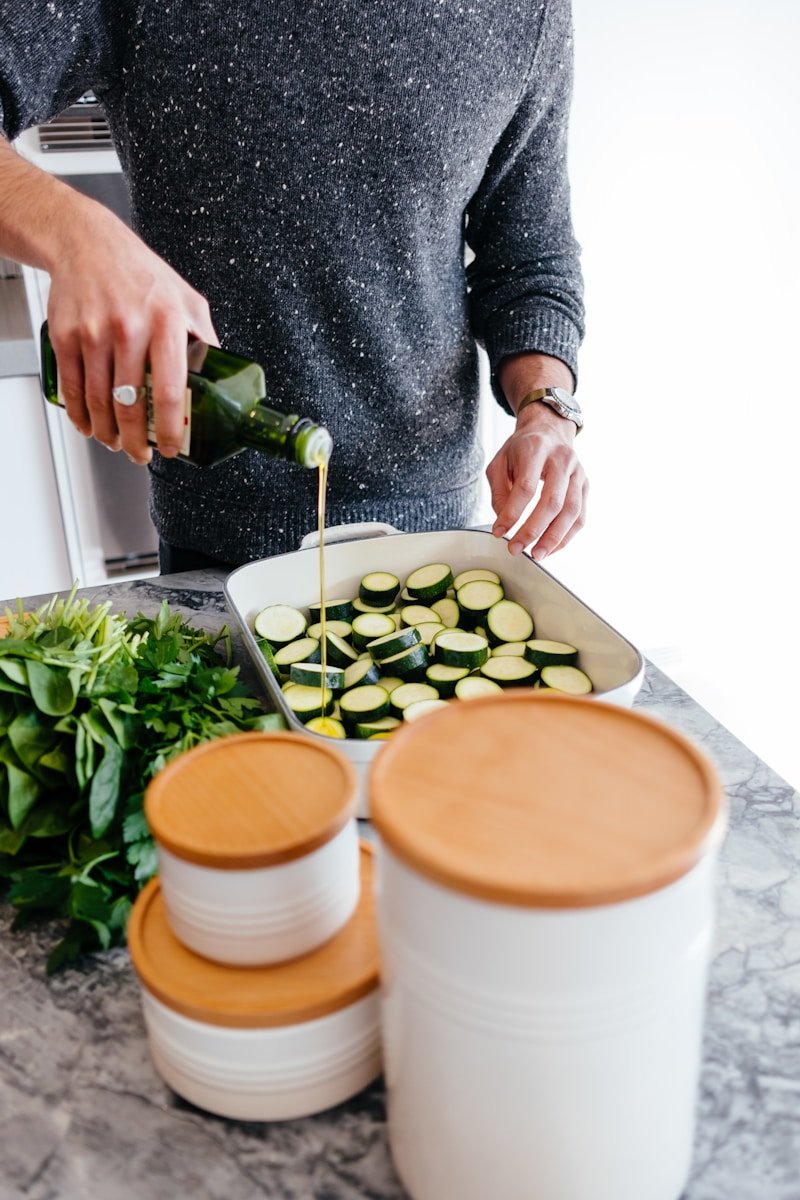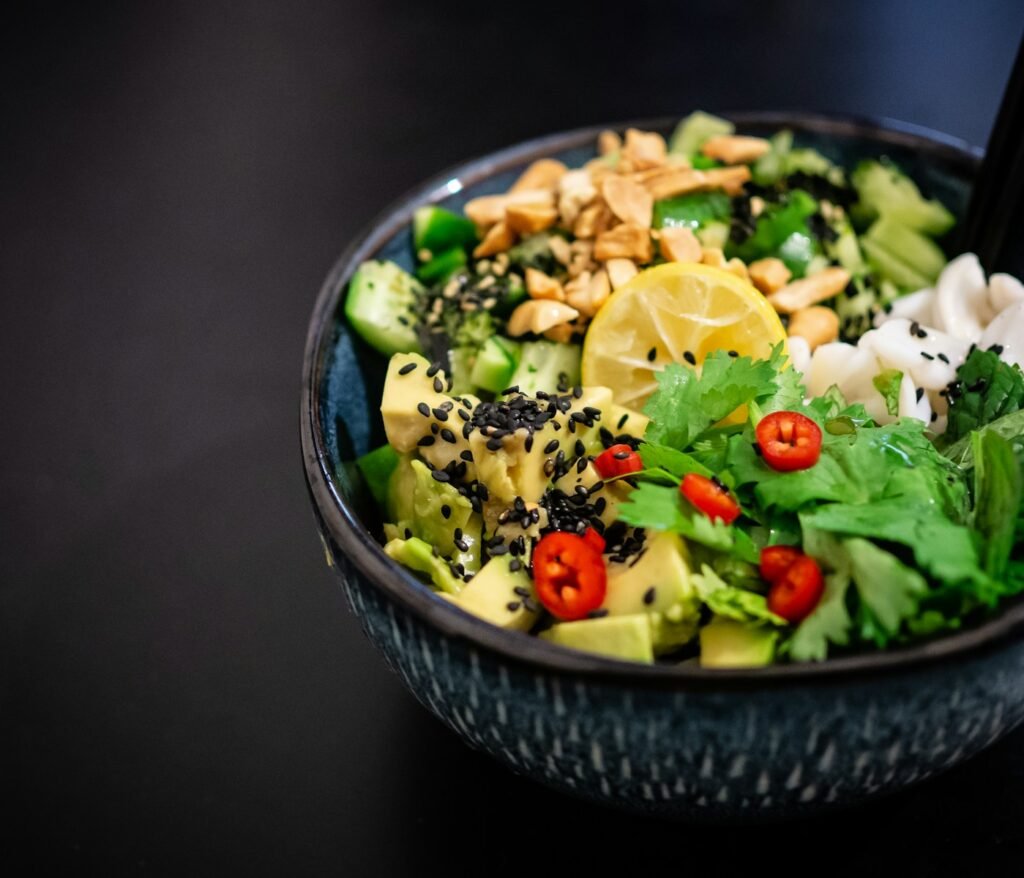Yummy Foods: Healthy Swaps You’ll Love
Healthy Food Swaps 101
Making healthy food swaps is easy and effective. By swapping unhealthy foods with healthier options, you can reduce your intake of saturated fats, added sugars and unhealthy fats and increase your intake of fiber, protein and healthy fats. Healthy food swaps can be made in all areas of your diet from snacks and desserts to drinks and condiments. In this article we will explore some simple and yummy healthy alternatives to help you improve your diet and health.
Fresh Fruit and Veggies: Nature’s Lolly
When it comes to maintaining a healthy lifestyle, having fruits and veggies as snack options can be a sweet strategy. These foods not only give you a burst of flavor but are wholefood healthy alternatives to sugary treats and processed snacks. Fruits like berries and mangoes are especially sweet naturally so are great when cravings strike. Packed with vitamins, antioxidants and fiber these will support your overall health while you indulge your sweet tooth.
Similarly crunchy veggies like carrots and bell peppers provide a satisfying texture that can be as enjoyable as traditional snacks. Carrots for example have a natural sweetness that can be as enjoyable as traditional snacks and their crunchy texture is perfect for dipping in light hummus or tzatziki. Bell peppers come in various colors and add a refreshing crunch to salads or can be eaten raw with a healthy dip, so versatile snacking options.
Another way to enjoy these healthy alternatives is through smoothies which allow you to blend various fruits and leafy greens into a delicious and nutritious drink. Combining fruits like bananas and pineapples with spinach or kale creates a nutrient dense drink that can be a meal replacement or post workout snack. Fruit salads can also be prepared ahead of time and are a refreshing option for gatherings or meal prep.
Including these foods in your diet will give you an appreciation for nature’s lolly and healthier eating habits. By choosing fruits and veggies as snack options you can experience the many flavors and health benefits they have to offer and overall well being.
Whole Grains and Brown Rice
The Base of Healthy EatingWhole grains are the foundation of a healthy diet, a wholefood alternative to refined grains. Unlike refined grains which have been stripped of nutrients whole grains have their bran and germ layers intact, maximising their health benefits. Adding whole grains to your meals not only adds flavour but also increases your intake of fibre, vitamins and minerals.
Quinoa is a whole grain that has gained popularity for its impressive nutrition profile. It’s a complete protein with all 9 essential amino acids making it perfect for vegetarians and those looking for protein alternatives. Quinoa is also gluten free and high in antioxidants and easy to add to any dish.
Brown rice is another healthy alternative with a more complex flavor and texture than white rice. Brown rice is a great source of manganese, selenium and magnesium essential for overall health. Use brown rice in salads, stir-fries or as a base for grain bowls and you’ll increase the nutrition of your meals.
Whole grain pasta is another yummy option to indulge in your favorite comfort foods while making healthier choices. It has more fiber and protein than regular pasta so better digestion and longer satiety. Whole grain pasta can be paired with any sauce or vegetables making it versatile and delicious.
To incorporate whole grains into your diet create grain bowls with an assortment of colorful vegetables, protein sources and a drizzle of dressing. Whole grain wraps can also be a great alternative to regular tortillas and a nutritious and satisfying base for fillings. Choosing whole grains is choosing healthy alternatives that not only nourish your body but also elevate your food experience.

Lean Protein: Essential Amino Acids and Healthy Options for Every Meal
Adding lean protein to your diet can be a game changer for a healthier lifestyle. Ground turkey is a heart healthy, protein rich alternative to ground beef with lower calorie and saturated fat content. Lean protein provides nutrients without excess calories and fat making it perfect for anyone looking for healthy alternatives. Major sources of lean protein are chicken breast, fish, legumes, tofu and tempeh. Each of these options has its own flavor and health benefits.
Chicken breast is a go to protein source due to its versatility and mild flavor. It’s low in fat and high in protein making it a great ingredient for many dishes from grilled salads to hearty soups. Fish like salmon and trout provides high quality protein and omega 3s for heart health. Baked or grilled fish can elevate any meal with its rich flavour and nutrition.
Legumes like lentils, chickpeas and black beans are great plant based protein sources. They are high in fiber which aids digestion and satiety making them a filling addition to any diet. Add legumes to salads, stews and dips and you’ll add texture and nutrition.
Plant based proteins like tofu and tempeh are popular in healthy eating. Tofu can take on any flavor and is perfect for stir-fries, soups or salads providing a subtle yet satisfying source of protein. Tempeh has a nutty flavor and firmer texture making it great for sandwiches and grain bowls.
In summary adding these lean proteins to your meals not only increases your protein intake but also your overall health. By experimenting with different cooking methods and recipes these healthy alternatives can become staples in your kitchen and make nutritious eating fun and sustainable.
Healthy Fats: Delicious and Nutrient Dense Options
Adding healthy fats to your diet can boost flavor and nutrition. Healthy fats like those found in avocados, nuts, seeds and olive oil play a crucial role in heart health and overall wellbeing. Unlike saturated and trans fats which can cause health issues when consumed in excess healthy fats provide essential fatty acids and other nutrients our bodies need to function optimally.
Avocados are a great source of monounsaturated fats which have been linked to improved cardiovascular health. Their creamy texture makes them a great addition to salads, smoothies and spreads. Enjoy an avocado toast topped with fresh herbs or a sprinkle of seeds and you have a satisfying and nutritious snack or meal.
Nuts and seeds like almonds, walnuts, flaxseeds and chia seeds are also nutrient dense options to healthy snacks. They are high in protein, fibre and healthy fats that keep you full. A handful of nuts or a sprinkle of seeds on your yogurt or salad adds flavour and crunch.
Olive oil especially extra virgin is another great source of healthy fats. It’s known for its anti-inflammatory properties and heart health benefits. Use it as a dressing, cooking oil or dip for bread to elevate the taste of your meals and incorporate healthy alternatives into your diet.
While healthy fats should be part of a balanced diet, it’s important to be mindful of portion control to avoid excessive calorie intake. Pairing healthy fats with a variety of colorful vegetables creates a harmony of flavors and textures and makes your dishes nutritious. By understanding the role of healthy fats in our diet we can make informed choices that benefits our health and our taste buds.
Healthy Snacks and Desserts
Finding healthy snacks and desserts can be a challenge but there are many delicious and nutritious options. Here are some healthy food swaps:
- Baked Sweet Potato Fries or Air-Popped Popcorn: Instead of reaching for potato chips try baked sweet potato fries or air-popped popcorn. These options are lower in unhealthy fats and higher in fiber making them a more satisfying and healthier choice.
- Dark Chocolate: Swap milk chocolate for dark chocolate with at least 70% cocoa content. Dark chocolate has less added sugar and antioxidants making it a more nutritious treat.
- Fresh Fruit or Veggies with Hummus: Replace sugary snacks like cookies and cakes with fresh fruit or cut veggies with hummus. Fresh fruit provides natural sweetness and essential vitamins while veggies with hummus offers a crunchy, savory alternative.
- Greek Yogurt: Use Greek yogurt instead of sour cream or mayonnaise in desserts and snacks. Greek yogurt is high in protein and lower in fat making it a healthier option that still gives you a creamy texture.
- Homemade Trail Mix: Make your own trail mix with nuts, seeds and dried fruit instead of buying store bought versions. This way you can control the ingredients and avoid added sugars and unhealthy fats.
Healthy Beverages and Condiments
Healthy beverages and condiments can make a big difference in your diet. Here are some healthy food swaps:
- Water, Unsweetened Tea or Coffee: Replace sugary drinks like soda and juice with water, unsweetened tea or coffee. These options are sugar free and help you stay hydrated without extra calories.
- Low-Fat or Fat-Free Milk: Choose low-fat or fat-free milk instead of whole milk. These options have the same essential nutrients with less saturated fat.
- Lemon Juice or Vinegar: Use lemon juice or vinegar instead of mayonnaise or sour cream as a condiment. These alternatives add flavor without the added fats and calories.
- Homemade Salad Dressing: Make your own salad dressing with olive oil and lemon juice instead of buying store bought dressing. This way you can avoid added sugars and unhealthy fats and enjoy a fresh, tasty dressing.
- Almond Milk or Coconut Milk: Swap sugary coffee creamers with almond milk or coconut milk. These plant based options are lower in calories and added sugars, make your coffee a healthier treat.
Healthy Dining Out Options
Eating out can be tough but there are many healthy options available. Always starting your day with a healthy breakfast is the best way to eat healthy. Here are some healthy food swaps to make when eating out:
- Grilled Chicken or Fish: Choose grilled chicken or fish instead of fried options. Grilling reduces unhealthy fats and retains the protein and nutrients of the meat.
- Brown Rice: Opt for brown rice instead of white rice. Brown rice is a whole grain that has more fibre and essential nutrients, making it a healthier base for your meal.
- Vegetables or Salads: Select vegetables or salads instead of fries or chips. Increasing your vegetable intake adds vitamins, minerals and fibre to your meal and reduces unhealthy fats.
- Herbs and Spices: Use herbs and spices instead of salt to add flavour to your food. This swap helps reduce sodium intake which is good for heart health.
- Low-Fat or Fat-Free Dairy Products: Choose low-fat or fat-free dairy products instead of whole dairy products. These options have the same essential nutrients with less saturated fat, supporting a healthier diet.
By making these simple and delicious healthy food swaps you can enjoy your meals and snacks and be healthier.









